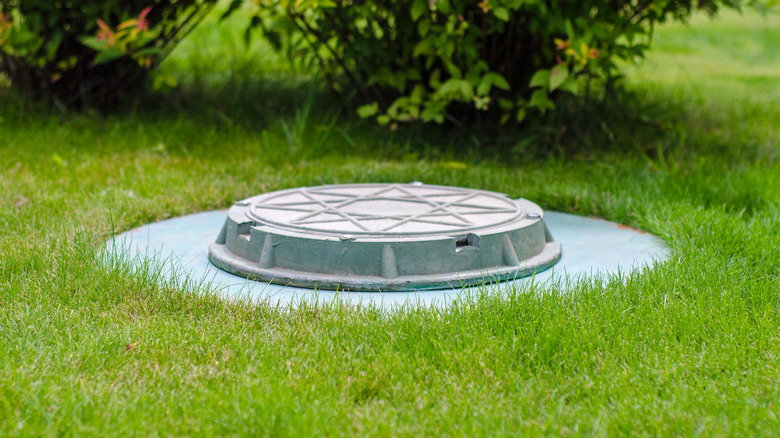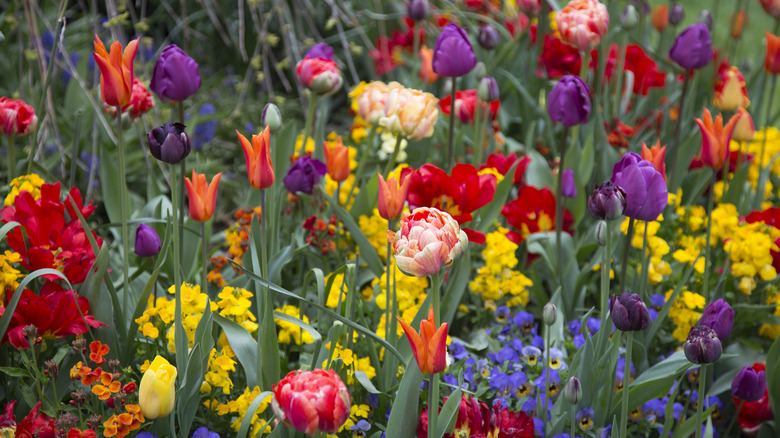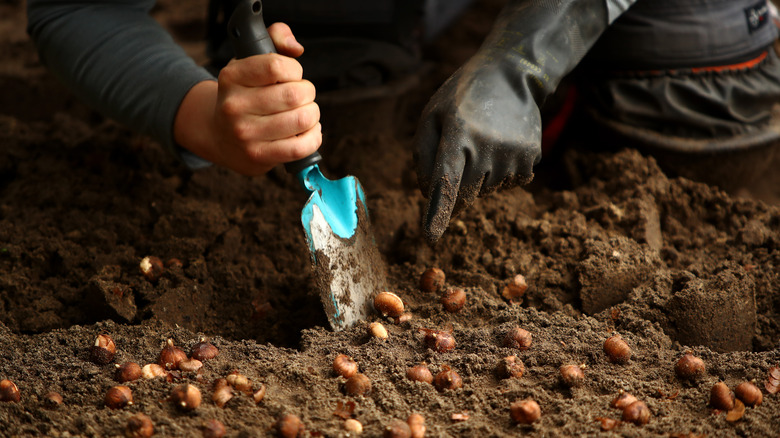Luscious Bulb Lawns Are The Beautiful Solution For Yards With A Septic Tank
Mound septic systems are an unfortunate reality for homeowners whose properties can't accommodate traditional, underground septic systems. If the water table under your property is too high, the bedrock is too porous and close to the soil surface, or the soil isn't sufficiently permeable, you can't equip the septic system with a standard drain field. Instead, you'd locate the septic tank underground, then create a mini-hill (called a "mound") out of gravel, sand and a surface topsoil layer. This mound is where the effluent trickles down through the different layers in the final phase of treating your home's wastewater. But while mound septic systems let you dispose of blackwater where underground counterparts can't, they blemish your property's visual appeal with an unsightly hill.
Septic mounds usually measure at least 3 feet in height, and since they're so conspicuous, keeping a mound covered with turf and nothing else exacerbates the problem. You're essentially drawing attention to a large, elevated bare spot. But you don't have to. Just like there are ways to hide hideous septic tanks in a yard, there are strategies for beautifying the mound. For example, growing plants on top of the mound adds the desperately needed visual interest to make the septic system less of an eyesore while also controlling erosion. Trees and shrubs are out of the question, since their roots will interfere with the septic system. Instead, your choices are limited to herbaceous plants. So why not try something fun and truly vivid, like a bulb lawn? Below, we'll look at a few bulb flowers that can grace your mound system with a splash of color and explain how to plant and care for them properly.
Which plants to choose for your bulb lawn
First, decide what types of bulbs you'd like to plant on top of the septic mound. These flowers broadly fall into two categories: those that bloom in the spring and summer through early fall. By planting both, you ensure a longer presence of color and aesthetic appeal on the mound. On the other hand, by focusing on either the spring- or summer-blooming varieties, you'll have a denser carpet of color that doesn't last quite as long. There's no right or wrong answer, and the choice is entirely yours.
Some of the earliest-blooming bulbs to flower in the spring are daffodils (Narcissus), snowdrops (Galanthus nivalis), Siberian squill (Scilla siberica), and winter aconite (Eranthis hyemalis). These bulb varieties naturalize (i.e. spread naturally the way they would in a wild environment to give the patch a more organic, cheerful look). With proper maintenance, naturalizing bulbs will come back and bloom next year. On the other hand, ornamental onions (Allium) and butter cress (Ranunculus) tend to bloom later as spring nears its end. You'll have to plant these spring-blooming bulbs in the fall.
Bearded iris (Iris x germanica), gladiolus (Gladiolus), and spider lily (hymenocallis) are examples of popular summer bulbs. If you want some of the bulbs to continue flowering into fall, consider planting dahlias (Dahlia) or fall crocus (Colchicum autumnale). In cooler climate zones, you'd plant any of these bulbs in late spring to expect flowers on the mound by the summer. Meanwhile, warmer climates lend themselves to earlier planting dates.
Planting and caring for a bulb lawn on a septic tank mound
The precise planting times will vary a bit depending on the bulb species and your climate zone. Likewise, the planting depth may be different depending on which flowers you settle on. That said, as a rule of thumb, most bulb plants need a hole with a depth that doubles or triples the bulb's height. For small plants, such as crocuses or snowdrops, holes with a depth of 4 inches will suffice. On the other hand, the daffodil bulbs require a planting depth of over half a foot. Crucially, before digging to make a home for the bulbs, check whether the mound's topsoil layer is thick enough. This precaution helps ensure that your gardening activities won't interfere with the septic mound's functions.
Watering needs may differ quite a bit between bulb varieties. For example, daffodils need regular soaking throughout their growing season, and irises like ample water in the spring and fall but are otherwise drought-tolerant. Meanwhile, tulips and alliums thrive in drier conditions, but need irrigation during lengthy dry spells. Take these varying water needs into account when planting the bulbs, so that the thirstier varieties aren't too close to those that like it dry.
One crucial aspect of bulb maintenance is letting the plants wither at the end of the growing season. As the foliage starts to die down, you may be tempted to mow the septic mound. However, interrupting the wilting process denies bulbs the chance to regain energy ahead of the next growing season.


